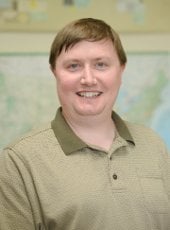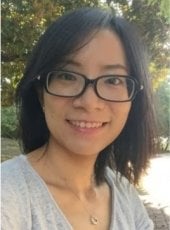Sun Nguyen, Adam Wellstead, Nancy Langston and Micheal Howlett recently published, “Mining the evidence: Public comments and evidence-based policymaking in the controversial Minnesota PolyMet mining project”.
 Don Lafreniere (SS/GLRC) along with colleagues Dayne Walling (U Minnesota) and Rick Sadler (Michigan State) presented a paper entitled “Rust Belt Cities as Exemplars for Urban Development Practice in a Low-Growth Future” at the International Seminar on Urban Form.
Don Lafreniere (SS/GLRC) along with colleagues Dayne Walling (U Minnesota) and Rick Sadler (Michigan State) presented a paper entitled “Rust Belt Cities as Exemplars for Urban Development Practice in a Low-Growth Future” at the International Seminar on Urban Form.
The paper outlines how slow- or no-growth communities in the American Rust Belt have responded to the socio-spatial processes shaping land use, development, and revitalization despite a long history of racial segregation and political fragmentation. The paper highlights the importance of community groups and civic networks in responding to these challenges in depopulating urban regions.
 Adam Welstead recently published Policy Innovation Labs in Farazmand A. (eds) Global Encyclopedia of Public Administration, Public Policy, and Governance. Springer, Cham.
Adam Welstead recently published Policy Innovation Labs in Farazmand A. (eds) Global Encyclopedia of Public Administration, Public Policy, and Governance. Springer, Cham.
 Kathleen Brosemer, EEP Ph.D. student, Chelsea Schelly (SS), Val Gagnon (GLRC), and Joshua Pearce (MSE/ECE), with colleagues from Michigan State — Kristin L. Arola, Douglas Bessette, and Laura Schmitt Olabisi —published “The energy crises revealed by COVID: Intersections of Indigeneity, inequity, and health” in Energy Research and Social Sciences.
Kathleen Brosemer, EEP Ph.D. student, Chelsea Schelly (SS), Val Gagnon (GLRC), and Joshua Pearce (MSE/ECE), with colleagues from Michigan State — Kristin L. Arola, Douglas Bessette, and Laura Schmitt Olabisi —published “The energy crises revealed by COVID: Intersections of Indigeneity, inequity, and health” in Energy Research and Social Sciences.
 Erin Burkett (EEP PhD Alum) and Angie Carter recently published “It’s Not about the Fish: Women’s Experiences in a Gendered Recreation Landscape” in the journal Leisure Sciences.
Erin Burkett (EEP PhD Alum) and Angie Carter recently published “It’s Not about the Fish: Women’s Experiences in a Gendered Recreation Landscape” in the journal Leisure Sciences.
This project was funded by the Michigan Sea Grant under Federal Grant Number NA18OAR4170102; Project Number Index: R/CBD-2; PO Number: 3004932532.
 Postdoctoral researcher Dan Trepal (SS/GLRC) and Don Lafreniere (SS/GLRC) recently published an article titled “Historical Spatial-Data Infrastructures for Archaeology: Towards a Spatiotemporal Big-Data Approach to Studying the Postindustrial City” in the journal Historical Archaeology
Postdoctoral researcher Dan Trepal (SS/GLRC) and Don Lafreniere (SS/GLRC) recently published an article titled “Historical Spatial-Data Infrastructures for Archaeology: Towards a Spatiotemporal Big-Data Approach to Studying the Postindustrial City” in the journal Historical Archaeology
The article outlines how spatiotemporal big-data approaches combined with geospatial technologies can expand the way archaeologists study postindustrial cities.
 Chelsea Schelly (SS), Kathleen Brosemer (SS Ph.D. student), Valoree Gagnon (CFRES/GLRC), Andrew Fiss (HU), Joshua Pearce (MSE/ECE), and Kathy Halvorsen (SS/CFRES/AVPRD) of Michigan Tech, and Douglas Bessette and Kristin Arola of Michigan State University authored a paper titled, “Energy Policy for Energy Sovereignty: Can Policy Tools Enhance Energy Sovereignty?” published in Solar Energy.
Chelsea Schelly (SS), Kathleen Brosemer (SS Ph.D. student), Valoree Gagnon (CFRES/GLRC), Andrew Fiss (HU), Joshua Pearce (MSE/ECE), and Kathy Halvorsen (SS/CFRES/AVPRD) of Michigan Tech, and Douglas Bessette and Kristin Arola of Michigan State University authored a paper titled, “Energy Policy for Energy Sovereignty: Can Policy Tools Enhance Energy Sovereignty?” published in Solar Energy.
Co-authors include
 A presentation by LouAnn Wurst was the subject of the article “Presentation shone a light on fascinating local history,” in the Marquette Mining Journal.
A presentation by LouAnn Wurst was the subject of the article “Presentation shone a light on fascinating local history,” in the Marquette Mining Journal.
 Adewale Adesanya (EEP Ph.D. candidate), Roman Sidortsov, Chelsea Schelly have published “Act locally, transition globally: Grassroots resilience, local politics, and five municipalities in the United States with 100% renewable electricity” in Energy Research & Social Science.
Adewale Adesanya (EEP Ph.D. candidate), Roman Sidortsov, Chelsea Schelly have published “Act locally, transition globally: Grassroots resilience, local politics, and five municipalities in the United States with 100% renewable electricity” in Energy Research & Social Science.
 Shan Zhou co-authored the article, “Collaboration mitigates barriers of utility ownership on policy adoption: evidence from the United States”, published in the Journal of Environmental Planning and Management.
Shan Zhou co-authored the article, “Collaboration mitigates barriers of utility ownership on policy adoption: evidence from the United States”, published in the Journal of Environmental Planning and Management.
This paper offers an answer to the question: “To what extent does collaboration between utilities and local governments influence energy policy adoption?” Cross-sectional data from the United States–focused Integrated City Sustainability Database (ICSD) are used to investigate the degree that specific city attributes and state policy influence the creation of city-scale energy policy.